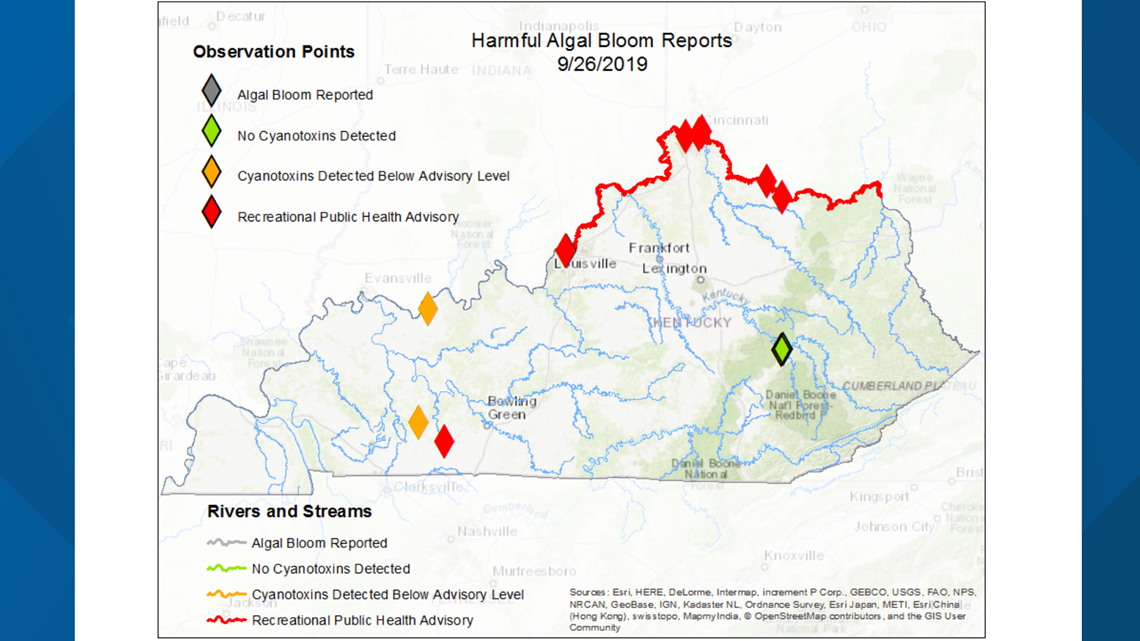LOUISVILLE, Ky. — Two Kentucky agencies are warning the public not to swim in certain areas after toxic algae were found at various locations along the Ohio River.
The Kentucky Division of Water and Kentucky Department of Public Health issued a recreational public health advisory on Thursday for the Ohio River from the McAlpine Dam to the Greenup Dam near Greenup, KY, as well as Briggs Lake near Russellville.
The advisory means that algal toxins were found in the water. Swimming, wading, and water activities are not recommended in these areas. If you accidentally ingest the water, you could experience symptoms such as stomach pain and vomiting. Contact with the water can cause skin irritation, breathing difficulties, rashes, as well as numbness of limbs.
The press release specifies that the advisory is recreational only. No toxins have been detected in treated water from the public water systems that draw from the river. The Kentucky Division of Water will continue to sample and monitor the public water systems’ raw water and finished, treated water while harmful algal bloom conditions continue.
The Kentucky Energy and Environment Cabinet shared the following guidelines to avoid exposure to these harmful blooms:
- Avoid direct contact, including swimming, wading, paddling, diving, and water skiing, with affected water that has a visible bloom, unusual color, or algal scum
- People who are prone to respiratory allergies or asthma should avoid areas with HABs. Children may be particularly at risk.
- If contact has been made with water containing blue-green algae, wash off with fresh water. Skin irritation may appear after prolonged exposure. If symptoms persist, talk to your doctor.
- If fishing in affected water, fish fillets may be eaten after they have been rinsed in clean, potable water. Do not eat the organs.
- Prevent pets and livestock from coming into contact with water where HABs are apparent.


For more information about harmful algal blooms and to see all current advisories, visit the Division of Water’s HAB webpage.
Make it easy to keep up-to-date with more stories like this. Download the WHAS11 News app now. For Apple or Android users.
Have a news tip? Email assign@whas11.com, visit our Facebook page or Twitter feed.

